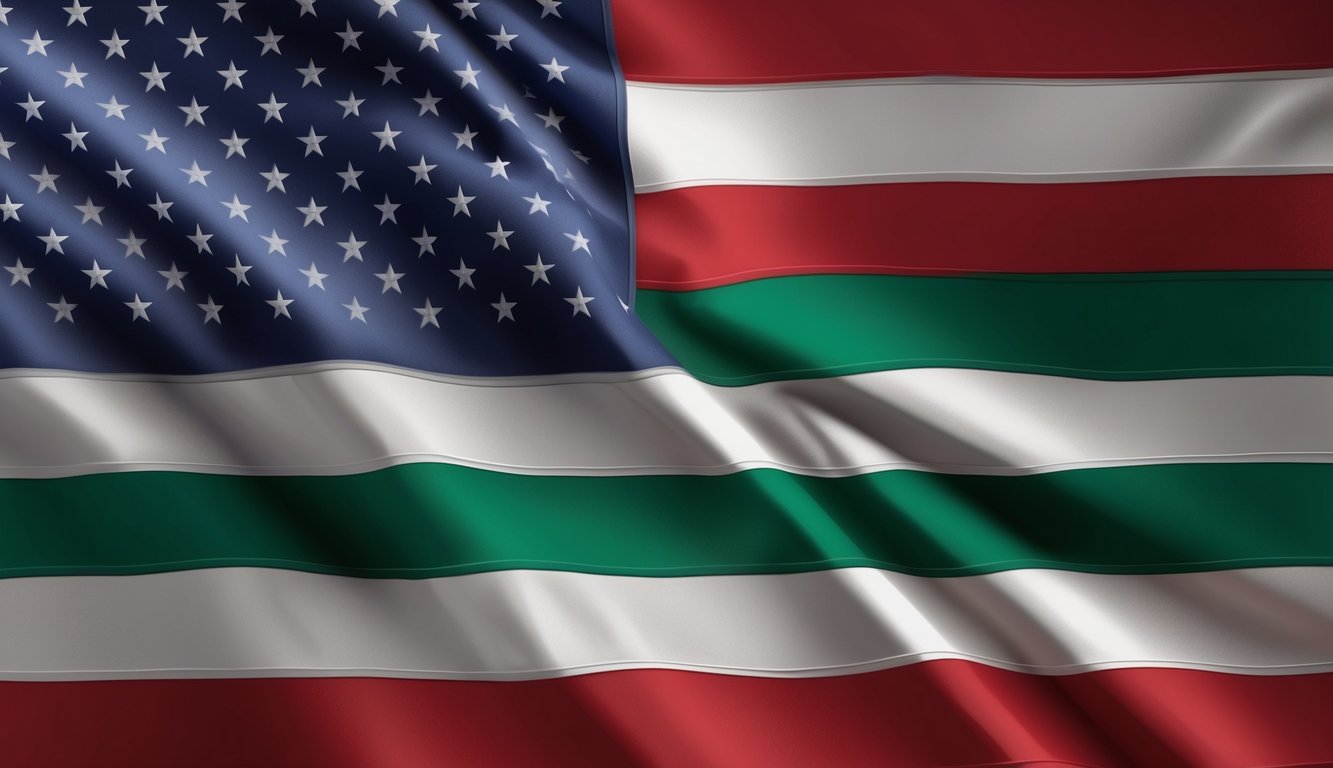The American flag featuring a green stripe has emerged as a significant emblem in recent years, signifying different organizations committed to safeguarding the nation. This altered flag design mainly pays tribute to federal protective forces, including military personnel, border patrol agents, park rangers, and conservation officers.
Its rise reflects a growing movement to acknowledge the vital roles of these often underappreciated public servants.
You may have noticed this unique flag at protests, parades, or government buildings.
The green stripe, typically replacing a traditional red stripe, contrasts vividly with the well-known red, white, and blue.
This subtle modification carries deep significance for those who display it, symbolizing respect for individuals who protect America’s security and natural resources.
As with many symbols, interpretations of the green-striped flag can differ.
Some view it as a homage to all first responders, while others link it specifically to conservation efforts or border security.
Its significance continues to adapt, reflecting the shifting landscape of public service and national priorities.
Key Takeaways
- The green stripe on the American flag honors federal protection forces and conservation personnel
- This modified flag design has gained traction as a symbol of respect for often-overlooked public servants
- Interpretations of the green-striped flag vary, mirroring evolving viewpoints on national service and priorities
Origin and Significance
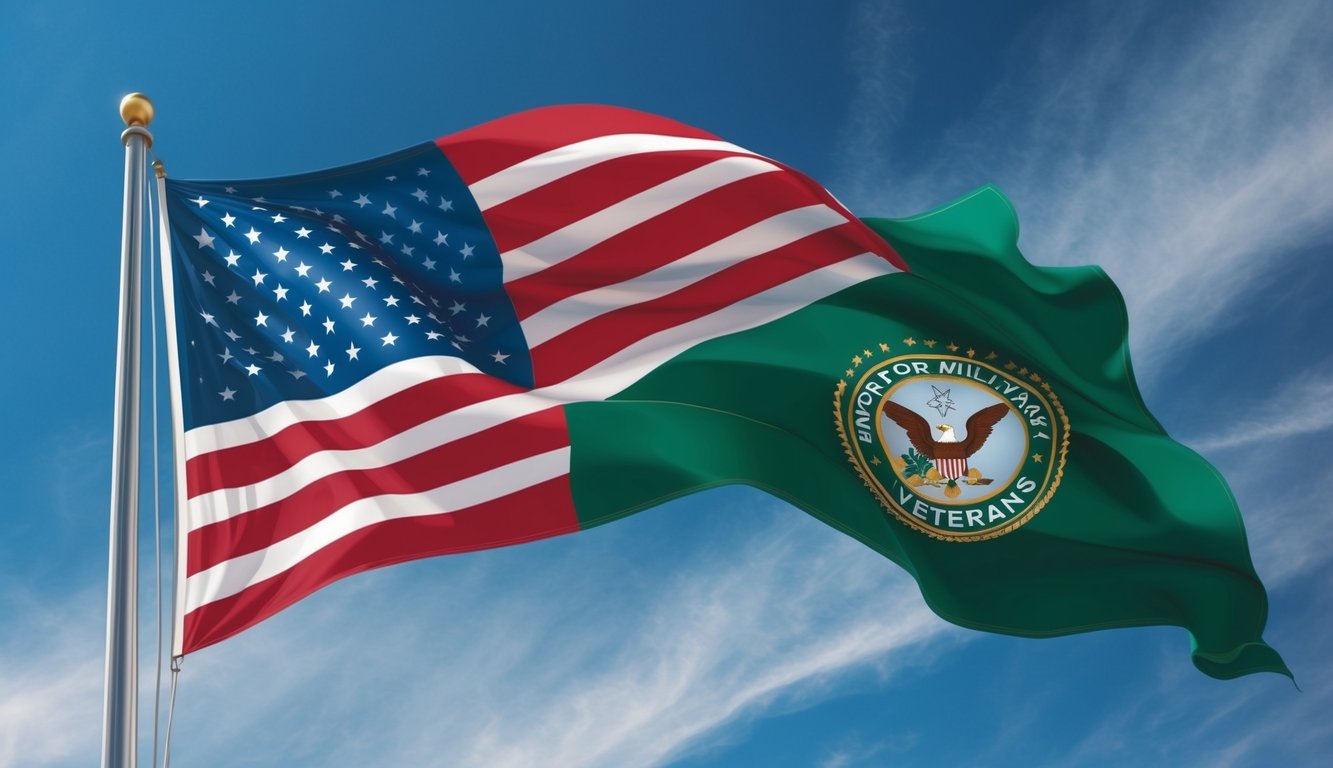
The American flag with a green stripe represents a distinctive variation honoring specific groups.
Its origins and significance differ from the traditional red, white, and blue design you may know.
History of the American Flag
Chances are you’ve encountered the standard American flag numerous times.
It showcases 13 red and white stripes representing the original colonies, along with 50 white stars on a blue background symbolizing the current states.
This iconic design has evolved since 1777 as stars were added with the inclusion of new states into the Union.
The colors on the flag carry significant meaning.
Red symbolizes valor and bravery, white represents purity and innocence, while blue stands for vigilance, perseverance, and justice.
These symbolic elements have remained constant despite the flag’s evolving appearance.
Meaning Behind the Green Stripe
The addition of the green stripe on modified American flags is a modern development.
Known as the “Thin Green Line,” it symbolizes support for military personnel, especially the Armed Forces.
This variation is not an official national flag, but rather an expression of solidarity.
In this context, green represents growth, renewal, and hope.
Incorporating it into the flag design allows supporters to honor the sacrifices and commitment of those serving in the military.
Some variations may also feature additional colored stripes to acknowledge different groups, such as a blue stripe for law enforcement or a red stripe for firefighters.
Symbolic Representation
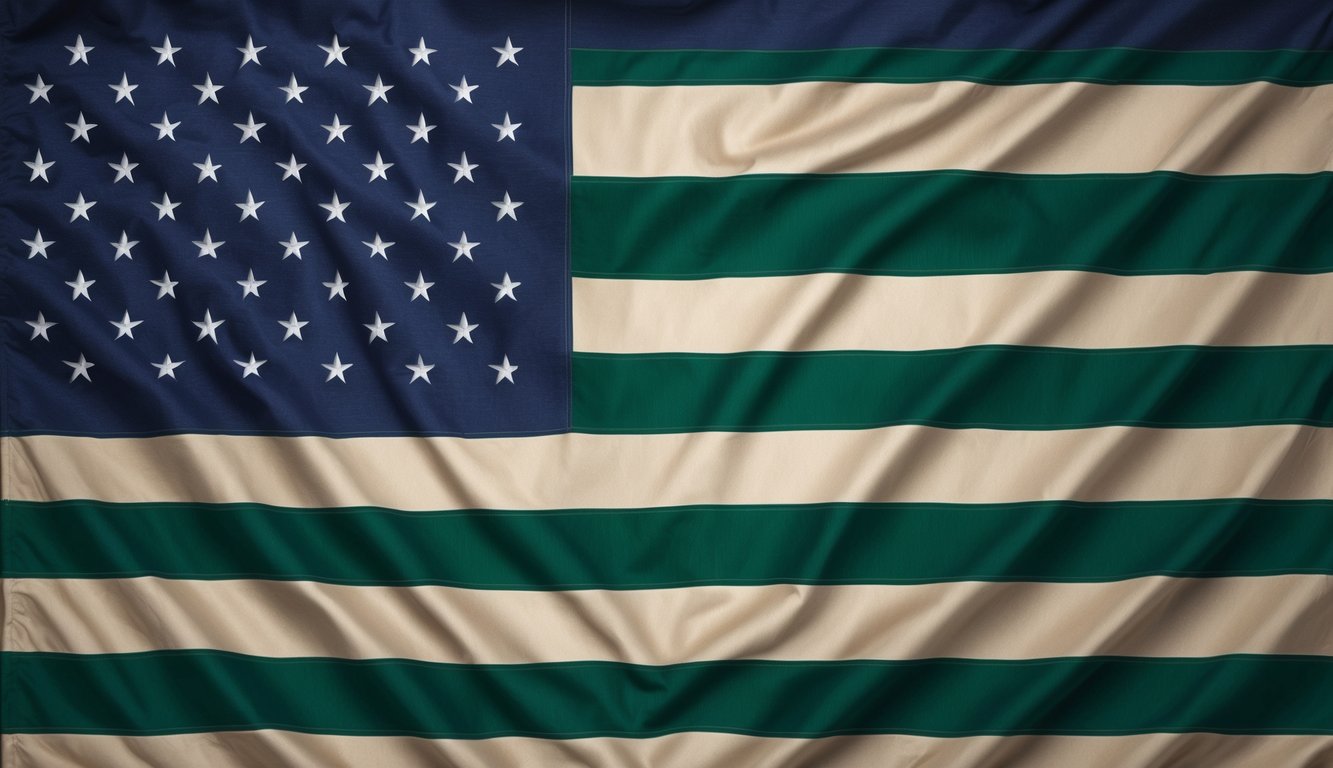
The American flag with a green stripe carries profound significance, merging traditional symbolism with recognition for service professions.
This unique design honors individuals who protect and serve, while retaining connections to the classic red, white, and blue.
Traditional American Flag Symbolism
You are likely aware of the standard American flag’s symbolism.
The 13 stripes represent the original colonies, while the 50 stars signify the current states.
Red embodies hardiness and valor, white signifies purity and innocence, and blue represents vigilance, perseverance, and justice.
These colors and elements serve as powerful reminders of American ideals and history.
When you see the flag, it evokes reflections on the nation’s founding principles and the bravery of those who have defended them throughout history.
The Green Stripe’s Connection to Services
The green stripe adds an additional layer of meaning to the flag.
It symbolizes support for a variety of service professions dedicated to keeping the country safe.
This encompasses law enforcement, firefighters, border patrol agents, and conservation personnel.
Green is commonly seen in the uniforms of these professionals, making it a fitting choice to honor their service.
When you encounter this modified flag, it stands as a symbol of appreciation for those who risk their lives daily.
The green stripe also pays tribute to fallen officers, serving as a reminder of their ultimate sacrifice.
It is a way for you to show unity with these essential service members and their families.
Modern Interpretations and Usage
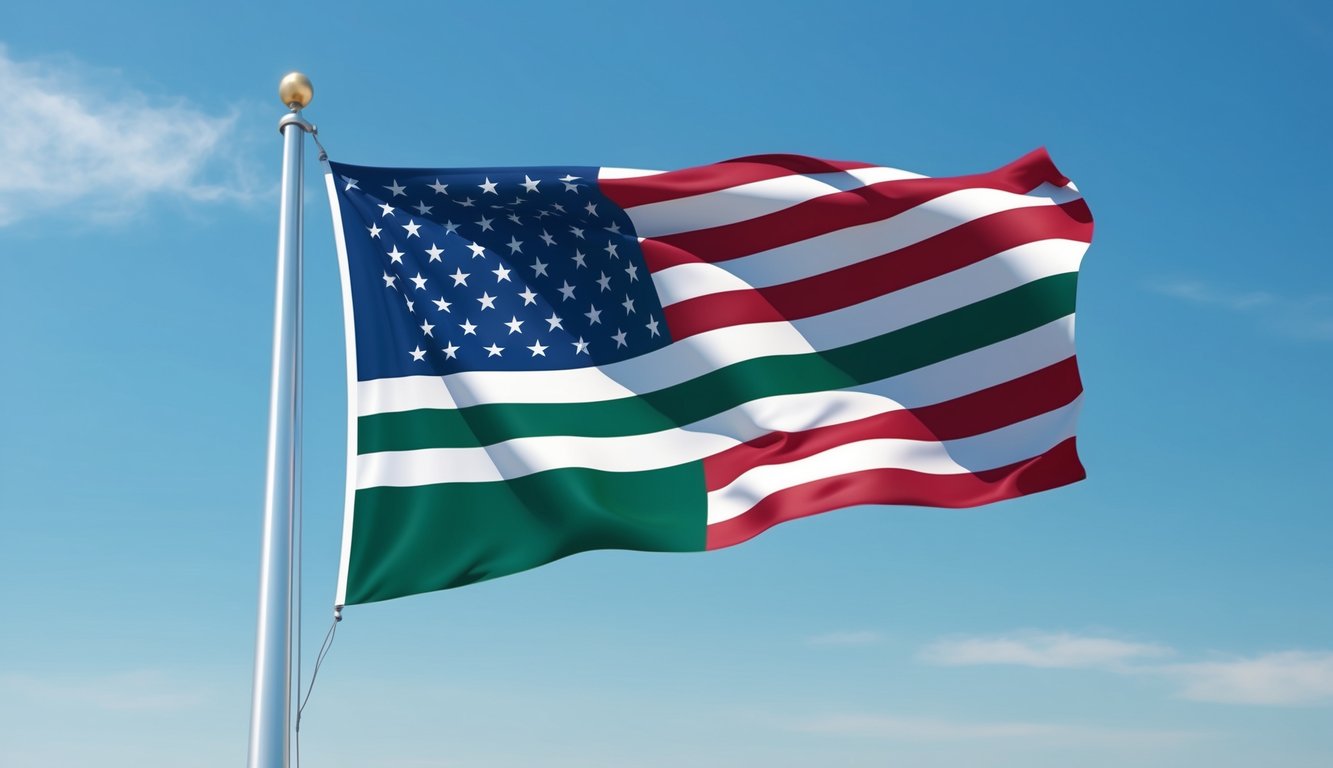
The American flag with a green stripe has taken on new interpretations in recent years.
Various groups have adopted this symbol to represent a range of causes and demonstrate support for specific professions.
Adoption by Different Groups
The green stripe flag is used to honor law enforcement, conservation officers, and various public safety personnel.
Some versions recognize border patrol agents and military veterans.
The “thin green line” frequently symbolizes park rangers, game wardens, and environmental protection officers.
Fish and wildlife officers have embraced this emblem to highlight their role in nature conservation.
Emergency medical services sometimes utilize a flag featuring a white and green stripe to honor paramedics.
Each group tailors the design to represent their unique contributions.
Public Recognition and Awareness
You may notice these flags displayed at memorials, rallies, or on vehicle bumpers.
Their visibility has grown as a means to showcase support for those who serve and protect.
Certain states have even officially recognized versions of the green stripe flag.
The symbol ignites discussions around sacrifice and public service.
It serves as a reminder of the risks undertaken by individuals in uniform.
Although the green striped flag may not be as widely recognized as the thin blue line flag, awareness around it is increasing.
Merchandise and social media campaigns are promoting its message.
As with any symbol, interpretations can differ.
For some, it signifies unity and respect, while others see it as a plea for increased funding or acknowledgment of commonly overlooked professions.
Flags and Their Meanings in Services
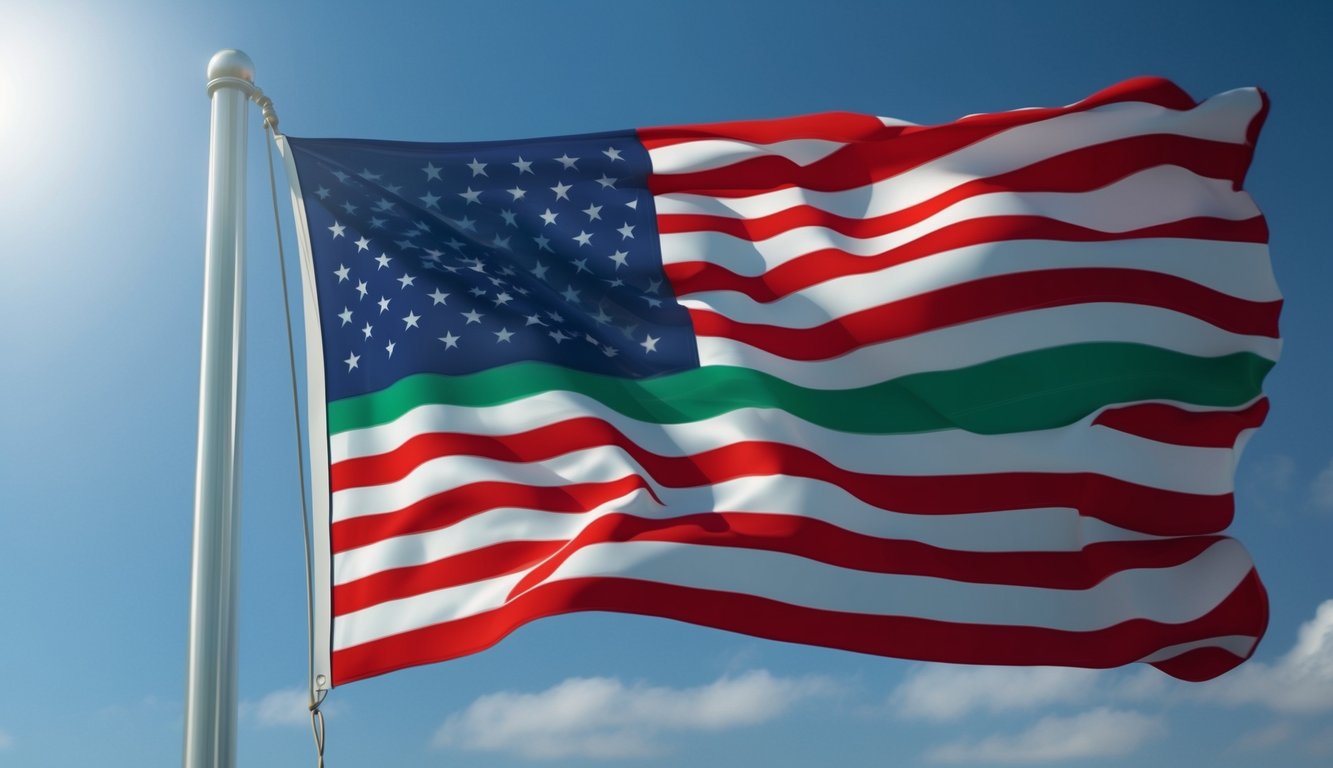
Flags serve as powerful symbols representing various service professions and their core values.
They honor dedication and sacrifice while fostering unity among those who serve.
Variations of the American Flag
You may have observed modified versions of the American flag featuring colored stripes.
The Thin Blue Line flag, with its black and white design and a single blue stripe, represents law enforcement.
Likewise, the Thin Green Line flag honors federal agents like border patrol and park rangers.
These flags symbolize the courage and commitment of those who protect and serve.
The NYPD flag boasts a distinctive design with five green stripes, symbolizing each of New York City’s boroughs.
It also features 24 stars, representing the original towns and cities that formed New York in 1898.
Recognition of Service and Duty
Flags adorned with colored stripes not only honor law enforcement but also encompass other service professions.
Red stripes often pay tribute to firefighters, while yellow may represent tow truck drivers or security guards.
Such symbols foster pride and unity within service professions.
The green stripe, in particular, has come to represent various groups.
You might observe it representing conservation officers, wildlife protectors, and even military personnel.
It embodies growth, renewal, and hope—qualities intrinsic to those serving in these capacities.
By displaying these flags, you express support for the dedication and sacrifices made by service professionals in your community.
Cultural Impact and Evolving Meanings

The American flag with a green stripe holds substantial symbolic significance, mirroring changing societal values and interpretations over time.
Its meaning is continually reshaped in response to cultural shifts and diverse viewpoints.
Flags as Symbols of Unity and Diversity
Modified American flags often embody specific groups or causes while retaining ties to national identity.
The green stripe can represent environmental awareness or support for military personnel.
These adaptations enable expressions of solidarity with particular communities.
Some individuals perceive these variations as divisive, whereas others see them as celebrations of America’s diversity.
You may encounter flags with green stripes at rallies, memorials, or community events.
They effectively convey complex ideas related to belonging and shared values.
Evolving Interpretations of Flag Symbolism
As society transforms, so too does the significance of flag symbols.
You might observe that the green stripe assumes different meanings depending on context and prevailing events.
During national crises, it may embody hope and renewal.
At other times, it could symbolize economic growth or environmental initiatives.
The military and law enforcement frequently utilize green-striped flags as emblems of honor.
For you, seeing such a flag might inspire feelings of respect or gratitude.
Others may interpret it as a call for peace or environmental advocacy.
This fluidity of meaning illustrates the flag’s role as a living symbol, evolving alongside the values and needs of each generation.
Extended Services Honored by the Flag
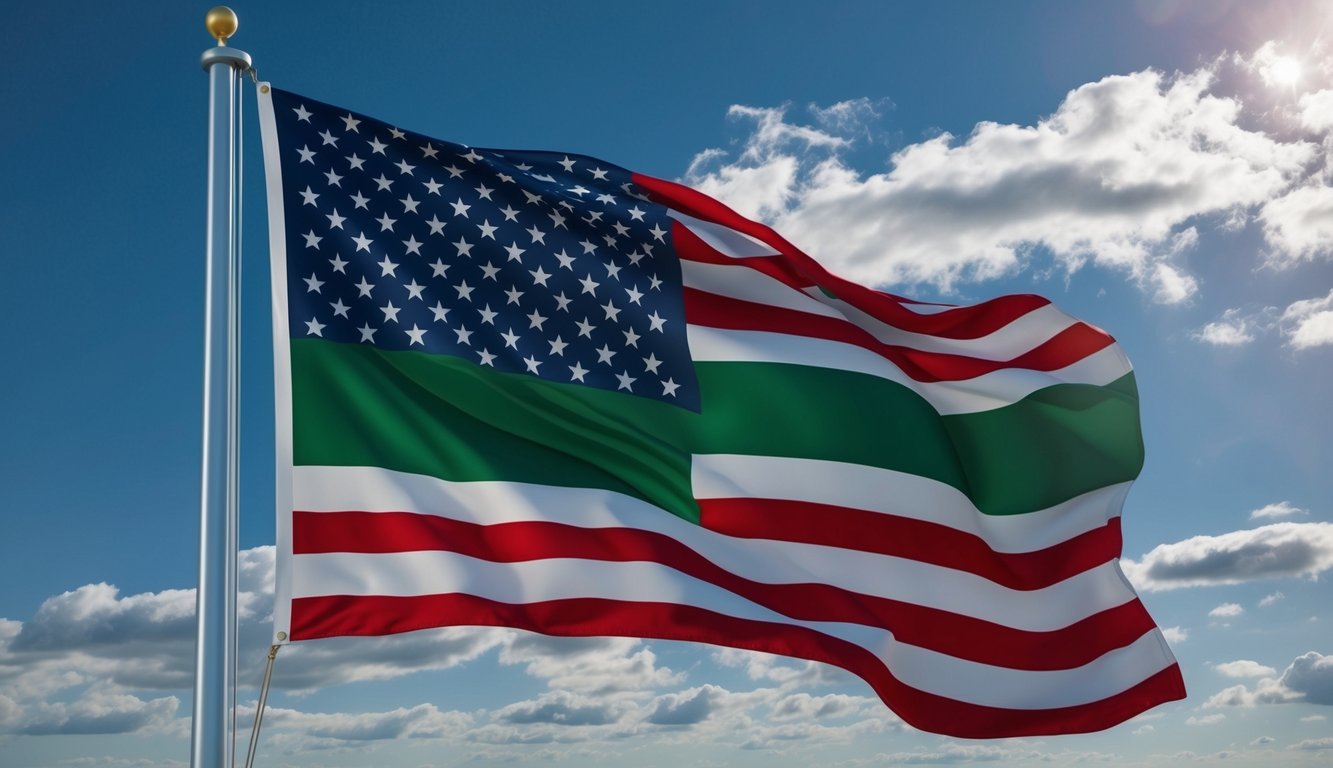
The green-striped American flag pays tribute to a diverse array of dedicated professionals who serve and protect.
It acknowledges the courage of individuals extending beyond traditional law enforcement roles.
Service Beyond Law Enforcement
You may be surprised to discover that the green stripe signifies more than merely police officers.
It also honors military personnel, including those in the Marine Corps, Air Force, Coast Guard, and Navy.
Veterans who have sacrificed for your freedom are similarly acknowledged.
The flag also extends recognition to federal agents, wardens, and members of the Civil Air Patrol.
Search and rescue teams, who confront perilous conditions to save lives, are also recognized.
Medical professionals and emergency medical technicians (EMTs) are vital components of this honored group.
Importance of Recognition
By displaying the green-striped flag, you demonstrate support for these frequently unrecognized heroes.
It serves as a powerful acknowledgment of their determination and daily sacrifices.
For numerous service members, this recognition can enhance morale.
It conveys that you appreciate their diligence and commitment.
The flag acts as a visible “thank you” for their tireless efforts to ensure your safety and wellbeing.
In many instances, you’ll notice designs featuring five green stripes.
Each represents a different facet of service or a specific group of professionals, underscoring the broad spectrum of individuals dedicated to protecting and serving your community.
Frequently Asked Questions
Green stripes and variations in the American flag symbolize different concepts based on context.
These FAQs provide answers to common inquiries regarding the green elements in flag designs and their meanings.
What does the green stripe on an American flag stand for?
A green stripe on the American flag typically signifies support for law enforcement officers.
It is part of the “Thin Line” flag series, with green particularly honoring federal agents, border patrol, and park rangers.
Is there a special meaning behind the black American flag with a green stripe?
The black American flag with a green stripe represents another variation of the “Thin Green Line” flag.
It signifies respect for conservation officers and game wardens dedicated to protecting wildlife and natural resources.
Can you explain the significance of the green and white colors on an American flag?
Green and white on an American flag lack official meanings in traditional flag signals.
In custom variations, green often symbolizes nature or environmental causes, while white generally represents purity or peace.
How is the all-green American flag interpreted?
An all-green American flag is not an official variant.
It may be displayed to advocate for environmental causes or sustainability initiatives.
Some individuals may use it to signify support for “green” policies or practices.
Why does the American flag used by the NYPD have green stripes?
The NYPD flag includes five green stripes representing New York City’s five boroughs.
Green is utilized due to its traditional association with the NYPD.
This design stands distinct from official U.S. flag variants.
What symbolism does a green line hold in general?
A green line typically symbolizes support for federal law enforcement agencies, conservation officers, or border patrol agents.
In broader contexts, it can also signify environmental causes, growth, renewal, or hope.

